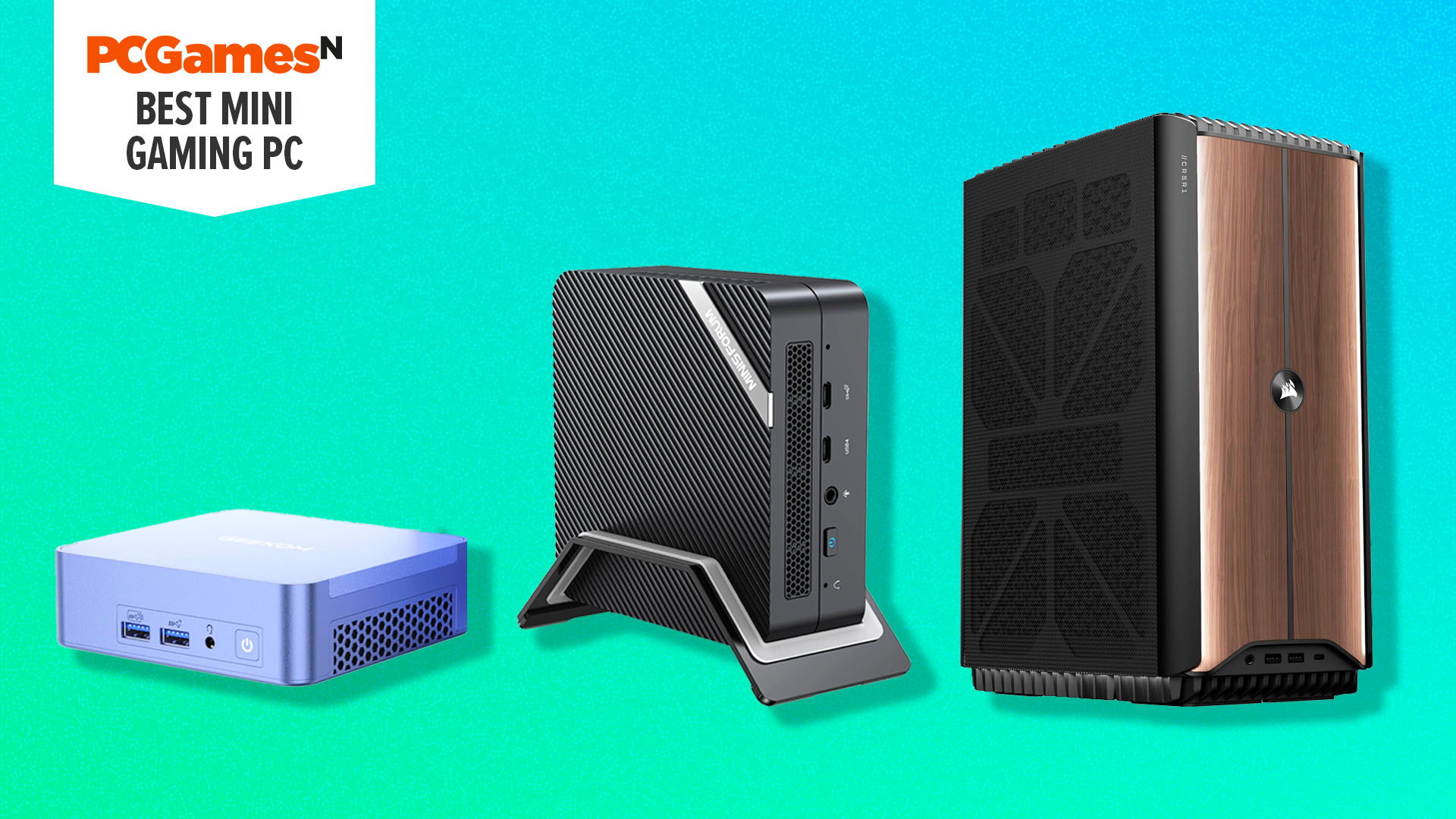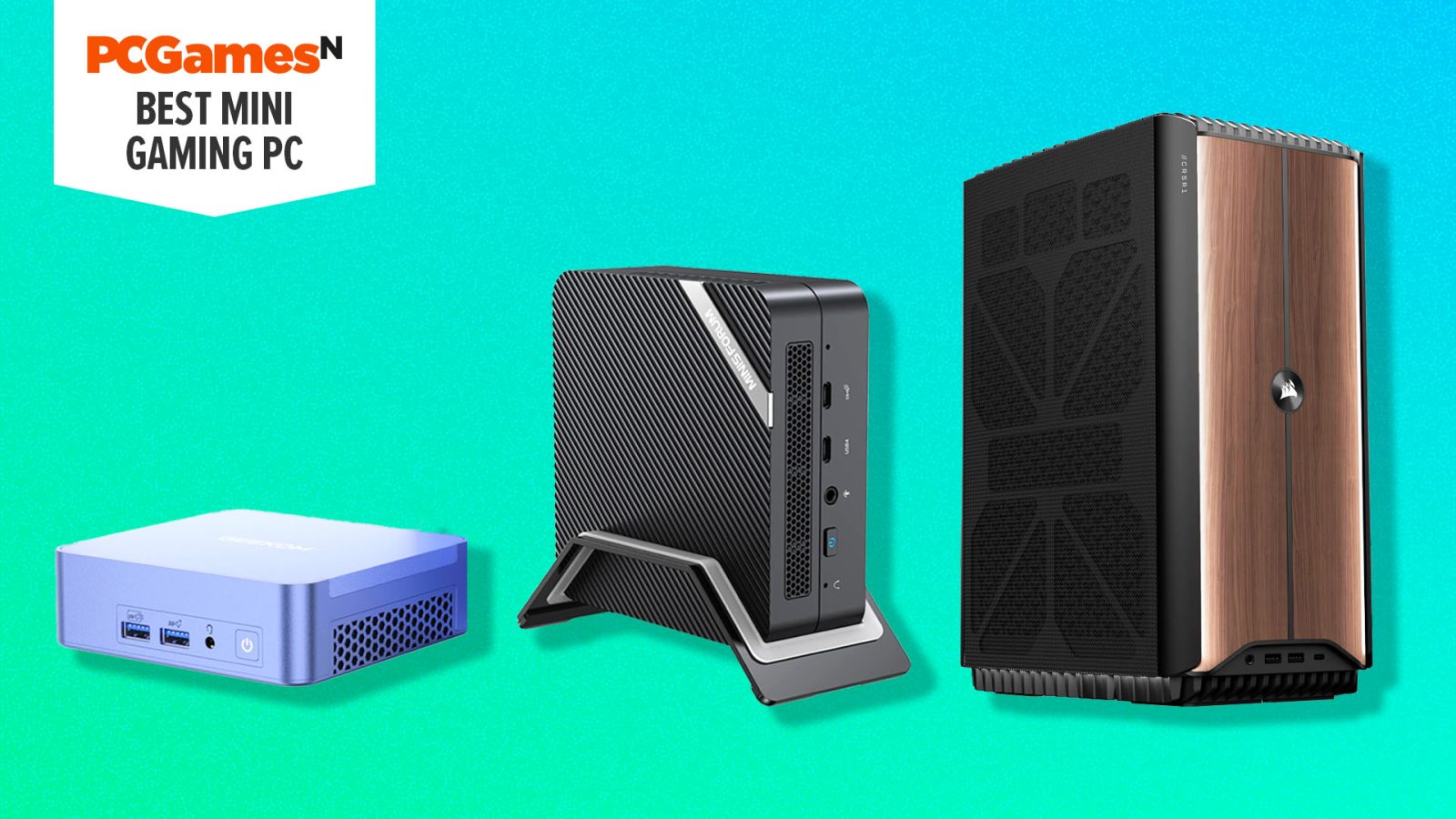
What is the best mini gaming PC? The traditional image of a gaming custom PC is some hulking behemoth of a machine, with frantically spinning fans, blazing rainbow RGB LEDs, and a monstrously large graphics card. However, the best mini gaming PCs are surprisingly capable now, and can even rival full-size desktop rigs.
Despite their size, mini PCs don’t have to skimp on performance, and they’re ideal for putting on a smaller gaming desk, or to take traveling. In this guide, we’ve chosen pre-built mini gaming PCs from the likes of Origin, Corsair, Geekom, and more. Check out our full guide on how to build a gaming PC if you want to choose the components yourself and find the best PC case for your needs.
Some exceedingly small mini gaming PCs, such as those offered by Minisforum and Geekom, take AMD mobile CPUs, which have integrated Radeon GPUs that punch well above their weight, and are even capable of playing games at 1080p without the need for a dedicated GPU.
Meanwhile, other more powerful mini gaming PCs, such as the Corsair One i500, build upward, and can even house a fully water-cooled Nvidia GeForce RTX 4090 GPU and Intel Core i9 14900K CPU, making them as potent as the best gaming PC designs you can get on the desktop. These are the best mini gaming PCs that enable you to play in small spaces.
Why you can trust our advice ✔ At PCGamesN, our experts spend hours testing hardware and reviewing games and VPNs. We share honest, unbiased opinions to help you buy the best. Find out how we test.
Best mini gaming PCs in 2024:
Best mini gaming PC FAQs
Is a mini PC good for gaming?
Yes, a mini PC can be good for gaming, but you’ll need to have a good look at the GPU specs. Larger mini PCs based on mini-ITX motherboards can often accommodate a seriously powerful graphics card, just like a desktop PC, but the smallest mini PCs often rely on integrated graphics. This is where the GPU is inside the CPU, as the small case doesn’t have the physical room to accommodate the cooling system for a full-size graphics card.
Can a mini PC replace a full-size desktop?
However, you won’t have the same room for expansion. Most mini-ITX motherboards only have a single PCIe slot, which will be used for your graphics card, and there are usually only two DIMM slots for RAM too. Most people don’t have multiple PCIe cards, though, and you can still get plenty of memory into a pair of DIMM slots.
Why are some mini PCs so tall?
Mini PCs come in all shapes and sizes to suit various needs, but if you want one that can handle a high-end CPU and graphics card then it needs to make room for them. That doesn’t just mean you need physical room for the components; you also need room for airflow to cool them, or for radiators if they use liquid cooling.
That’s why some high-end gaming PC cases have instead been built upwards rather than outwards. This means the PC still has a small footprint, so it doesn’t take up too much desk space, but it can still contain powerful PC components, such as a large graphics card. A mini PC based on the new Fractal Design Mood case, for example, will be 453mm tall, so it can house a water-cooled CPU and decent graphics card, but its footprint is a neat 212 x 212mm square.
Can you upgrade a mini PC?
Yes, you can upgrade a mini PC, but the extent to which you can upgrade it depends on the PC in question. Some mini PCs are based on mobile components intended for laptops, and you won’t be able to change the CPU or GPU, but you may well be able to upgrade the memory if it’s installed in standard DIMM or SODIMM slots, or the SSD if it uses a standard M.2 or SATA connector.
Also, even some mini PCs based on standard desktop components can be a hassle to upgrade, as they’re designed to accommodate specific components that line up with the case and cooling system. For example, you can easily upgrade the SSD and RAM in the Corsair One, but not the motherboard or graphics card.
If you think you might want to upgrade the core components, such as the CPU or GPU, in your mini PC later, it’s best to go for one based on a standard mini-ITX case and motherboard that doesn’t use proprietary components, such as the Origin Chronos V3.











Leave a Reply